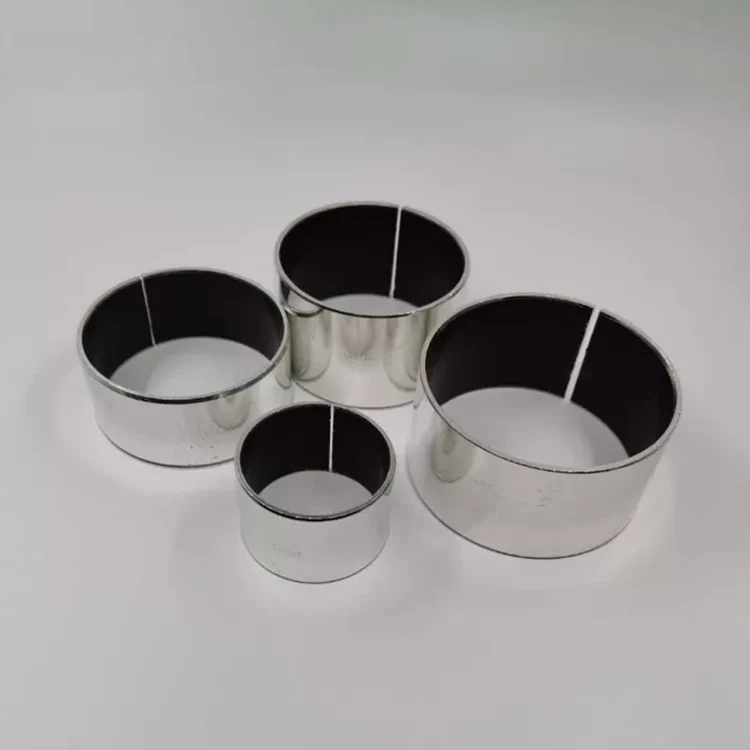The Advantages of Self-Lubricating Bearings: A Modern Solution for Maintenance-Free Operation
2024-08-23
In the world of machinery and engineering, bearings play a crucial role in reducing friction between moving parts, ensuring smooth and efficient operation. Traditional bearings require regular lubrication to maintain performance and longevity, but this can lead to increased maintenance costs and downtime. Enter Self-Lubricating Bearings—an innovative solution designed to reduce or eliminate the need for external lubrication, offering numerous benefits in various applications. In this blog, we'll explore what self-lubricating bearings are, how they work, and why they are becoming an increasingly popular choice in industrial and consumer products.
What are Self-Lubricating Bearings?
Self-lubricating bearings are a type of bearing that incorporates lubrication directly into the bearing material itself or features a mechanism that continuously supplies lubrication during operation. Unlike traditional bearings, which require periodic application of grease or oil, self-lubricating bearings are designed to operate with little to no external lubrication, significantly reducing maintenance requirements.
How Do Self-Lubricating Bearings Work?
Self-lubricating bearings typically work through one of the following mechanisms:
1. Lubrication-Impregnated Materials:
These bearings are made from materials that are impregnated with lubricants, such as oil or solid lubricants (e.g., graphite or PTFE). As the bearing operates, the lubricant is released from within the material to the bearing surface, ensuring continuous lubrication.
2. Composite Structures:
Some self-lubricating bearings are made from composite materials that include layers of lubricating substances. These bearings may have a wear-resistant outer layer and a lubricating inner layer that slowly releases lubricant as the outer layer wears down.
3. Lubrication-Embedded Liners:
In this design, the bearing is lined with a material that has lubricants embedded in its structure. As the bearing moves, the lubricant is gradually released, reducing friction and wear on the moving parts.
Advantages of Self-Lubricating Bearings
1. Maintenance-Free Operation
The most significant advantage of self-lubricating bearings is their ability to operate without the need for regular lubrication. This eliminates the need for frequent maintenance, reducing downtime and associated costs. In applications where access to bearings is difficult or hazardous, self-lubricating bearings offer a safe and efficient solution.
2. Extended Bearing Life
Self-lubricating bearings are designed to provide consistent lubrication throughout their service life, which helps to minimize wear and extend the lifespan of the bearing. This leads to longer intervals between replacements and lower overall operating costs.
3. Improved Performance in Harsh Environments
In environments where traditional lubricants can break down or become contaminated—such as in high temperatures, exposure to chemicals, or dusty conditions—self-lubricating bearings maintain their performance. The built-in lubrication system is less susceptible to external factors, ensuring reliable operation even in challenging conditions.
4. Reduced Environmental Impact
By eliminating the need for external lubricants, self-lubricating bearings help reduce the environmental impact associated with the disposal of used oils and greases. Additionally, these bearings often require fewer resources to manufacture and maintain, contributing to a more sustainable operation.
5. Versatility Across Applications
Self-lubricating bearings are versatile and can be used in a wide range of applications, from industrial machinery and automotive components to consumer products and medical devices. Their ability to perform reliably in various environments makes them suitable for both high-load, high-speed applications and low-speed, oscillating movements.
Common Applications of Self-Lubricating Bearings
- Automotive Industry: Self-lubricating bearings are used in various automotive components, such as suspension systems, steering mechanisms, and electric motors, where maintenance-free operation is critical for vehicle reliability and performance.
- Industrial Machinery: In industrial settings, self-lubricating bearings are found in equipment like conveyors, pumps, and gearboxes, where continuous operation is essential and downtime for maintenance is costly.
- Aerospace and Defense: The aerospace and defense industries utilize self-lubricating bearings in aircraft and military equipment, where reliability and low maintenance are paramount, especially in extreme conditions.
- Medical Devices: Self-lubricating bearings are used in medical devices, such as surgical instruments and diagnostic equipment, where cleanliness and long-lasting performance are crucial.
- Consumer Products: Many everyday items, such as household appliances, power tools, and fitness equipment, incorporate self-lubricating bearings to ensure smooth operation and reduce the need for user maintenance.
How to Choose the Right Self-Lubricating Bearing
When selecting a self-lubricating bearing for your application, consider the following factors:
1. Load and Speed Requirements: Determine the load and speed at which the bearing will operate. Different materials and designs are better suited for varying levels of stress and motion.
2. Operating Environment: Consider the environment in which the bearing will be used. High temperatures, exposure to chemicals, or abrasive conditions may require specific bearing materials.
3. Material Compatibility: Ensure that the bearing material is compatible with other components in the system, particularly if there are concerns about chemical reactions or material degradation.
4. Cost and Availability: While self-lubricating bearings can reduce maintenance costs, it's important to balance the initial cost with long-term savings. Consider the availability of the bearings for replacements or new installations.
Conclusion
Self-Lubricating Bearings represent a significant advancement in bearing technology, offering a solution that reduces maintenance, extends bearing life, and performs reliably in a wide range of applications. As industries continue to seek more efficient and sustainable operations, the demand for self-lubricating bearings is likely to grow. Whether you’re designing machinery, maintaining equipment, or simply looking to improve the reliability of your products, self-lubricating bearings offer a modern, cost-effective solution that can meet the demands of today’s fast-paced world.



